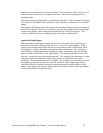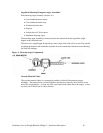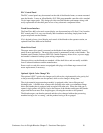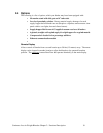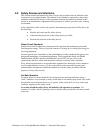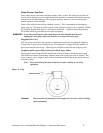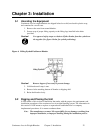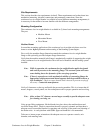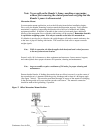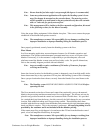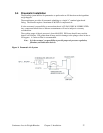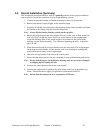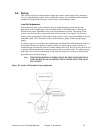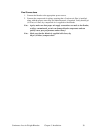Continuous Loss-in-Weight Blenders Chapter 3: Installation 23
Site Requirements
This section describes site requirements in detail. These requirements are broken down into
mechanical mounting, electrical connections and pneumatic connections. Since the
continuous loss-in-weight blender is available in several different mounting arrangements, it
is necessary for the reader to become familiar with the different arrangements.
Mounting Configuration
The continuous loss-in-weight blender is available in (3) three basic mounting arrangements.
They are:
• Machine Mount
• Mezzanine Mount
• Floor Mount
Machine Mount
In a machine mounting application of the continuous loss-in-weight unit, there are a few
items to review before placement and mounting of the blending system begins.
First, verify the machine flange dimensions match the continuous loss-in-weight blender
flange or the optionally provided adapter flange dimensions.
Verify that the machine material inlet flange is mechanically capable of supporting the weight
of the continuous loss-in-weight blender with a full load of material and the loading system
installed.
Note: While in operation, the continuous loss-in-weight blender applies horizontal
and vertical pressures to the mounting flange. The vacuum system will cause
some shaking due to the dynamics of the conveying operation.
Note: If there is a question as to the mechanical stability of a mounting flange, the
appropriate reinforcements and lateral supports must be provided to ensure a
safe installation. Check to ensure that the unit is braced to prevent swaying if
necessary. Contact the manufacturer.
Verify all clearances on the top and beside the processing machine. This is to insure that all
motors, hoppers, control panels, etc. have adequate room for proper operation and servicing.
Note: Allow at least 24” clearance around auger assembly to provide adequate room
for cleaning, servicing, etc.
Using proper lifting equipment, lift the blender into place above the machine throat and
secure the flange bolts. Check to ensure that the unit is properly oriented, and that there is
adequate access around the blender for operating and servicing of the panels and cleaning of
the feeder units. A work platform with OSHA approved handrails is recommended.
Take care to insure proper orientation with adequate access to operator controls, mix
chamber, and metering units.



